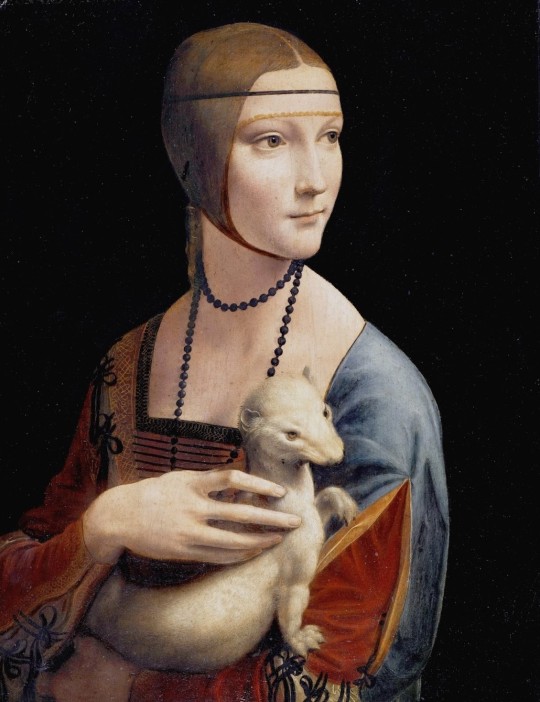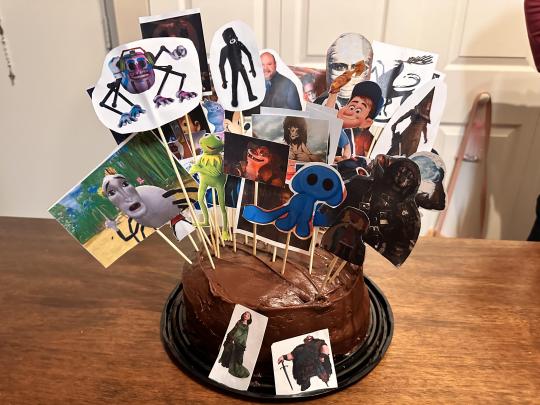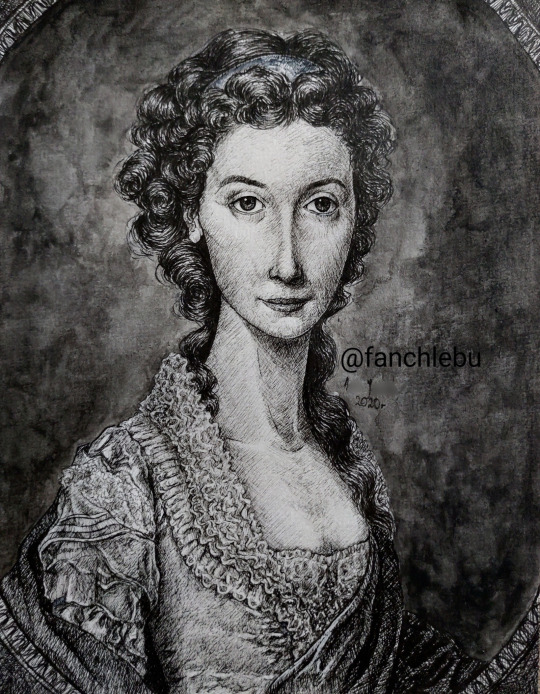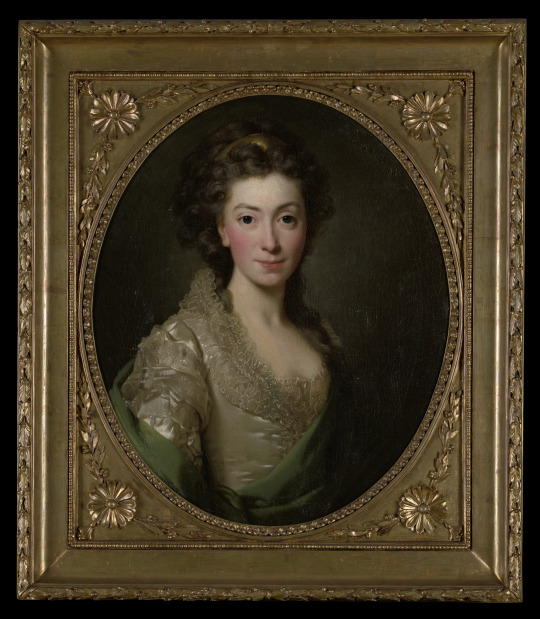#Izabela Czartoryska
Explore tagged Tumblr posts
Text
Czartoryski Museum Kraków Poland

View On WordPress
#Antonina Czartoryska Grand Chancellor of Lithuania#Congress Kingdom of Poland#Congress of Vienna#Czartoryski Museum Gothic House#Czartoryski Museum Kraków#Czartoryski Museum Temple of the Sibyl#Jan Jerzy Flemming Grand Treasurer of the Crown#Kraków Old Town#Lieutenant Piotr Wysocki Army of Congress Poland#MNK Muzeum Czartoryskich#Napoleon’s Warsaw Duchy#Nazis XX Foundation#Parable of the Good Samaritan by Rembrandt van Rijn#Polish Cadet Revolution#Polish May 3rd Constitution#Polish November Uprising#Polish–Russian War 1830–31#Portrait of a Lady with an Ermine by Leonardo da Vinci#Princess Izabela Czartoryska née Flemming#Puławy Poland
1 note
·
View note
Text



Portrait of Izabela Lubomirska Czartoryska by Per Krafft the Elder after Alexander Roslin, c. 1767
#Per Krafft the Elder#per krafft#18th century#mdp18th c.#1760s#mid 18th century#poland#18th c. poland
14 notes
·
View notes
Text
Princess Izabela Czartoryska was a towering figure of late-eighteenth- and early-nineteenth-century European cultural and intellectual life. Married at sixteen to a distinguished older aristocrat, she amassed learning, influence, and a role in both Polish and European statecraft through encounters with figures ranging from Jean-Jacques Rousseau to Joseph II of Austria. After the liquidation of her homeland’s sovereignty with its third partition in 1795, she spent the final decades of her life pioneering and curating spaces of preservation, both of Polish nationhood and of the human experience writ large.
Izabela the Valiant: The Story of an Indomitable Polish Princess (William Collins, 2024) is her definitive biography, penned by distinguished historian Adam Zamoyski—the protagonist’s great-great-great-grandson. Trawling through a vast family archive and arcane sources in half a dozen languages, Zamoyski has told her story as one of empowerment, education, and encounter in an age of profound national and international upheaval.
8 notes
·
View notes
Note
Ah, Adam Jerzy Czartoryski! According to the Russian memoirists of the day, he was one of those rare and dangerous people who feel strongly and induce in others feeling just as strong, their noble and deep affection only ever expressed in their melancholic eyes, their silence and distance saying more than any number of words. The same exact principle of winning friendship and love he applied to both Alexander Pavlovich and Alexander's wife.
His nobility and idealism didn’t hinder him any in being a political whore – though, to be fair, a very honest one, as those things go. But could one expect any different from Izabela Flemming Czartoryska’s son? (And does one get bonus sexy points by having a sexy Mom?)
Known to be described as having 'velvet eyes'.
Portrait of his hot mom for context:

26 notes
·
View notes
Text

Izabela Lubomirska
Artist: Élisabeth Louise Vigée Le Brun (French, 1755–1842)
Date: 1875 (copy of a painting of 1793)
Medium: OIl on Canvas
Collection: Łańcut Castle, Poland
DESCRIPTION
Princess Elżbieta Izabela Czartoryska (21 May 1736 – 11 November 1816), better known under her married name of Izabela Lubomirska, was a politically influential Polish aristocrat, philanthropist and cultural patron.
#portrait#painting#oil on canvas#polish#european#elisabeth louise vigee le brun#19th century painting#landscape#pillar with bust#aristocrat#philanthropist
4 notes
·
View notes
Photo

PL:
Świątynia Sybilli, Puławy
Jest to pierwsze polskie muzeum historii narodu. Świątynia wybudowana została przez księżną Izabelę Czartoryską w latach 1798-1801 jako „świątynia pamięci”. Zatrudniony przez nią architekt – Chrystian Piotr Aigner – wzorować się miał na świątyni bogini Westy stojącej w Tivoli koło Rzymu. Nad wejściem znajduje się napis: „Przeszłość-Przyszłości”. Schodów do górnej sali strzegą lwy podarowane przez odwiedzającego Puławy cara Rosji Aleksandra I. Do sali dolnej wchodzi się od strony skarpy.
W świątyni księżna gromadziła pamiątki rodzinne Sieniawskich, Lubomirskich i Czartoryskich oraz pamiątki po innych wielkich Polakach. Miały one przypominać pełną chwały przeszłość narodową. W 1830 r., jeszcze przed powstaniem listopadowym, zbiory zostały ewakuowane, by potem trafić do Paryża po zakupieniu przez ks. A. J. Czartoryskiego Hotelu Lambert. Po ich powrocie do Polski trafiły do Krakowa, gdzie stały się zalążkiem Muzeum Książąt Czartoryskich. Muzeum w Świątyni Sybilli zostało reaktywowane przez PTTK dopiero w 1938 r. i jest dostępne do dziś.
EN:
Temple of the Sibyl, Puławy, Poland
It is the first Polish museum of the nation's history. The temple was built by Princess Izabela Czartoryska in the years 1798-1801 as a "temple of memory". The architect she hired - Chrystian Peter Aigner - was to model the temple of the goddess Vesta standing in Tivoli near Rome. Above the entrance there is an inscription: "Past-Future". The stairs to the upper hall are guarded by lions donated by Tsar Alexander I of Russia who visited Puławy. The lower hall is entered from the side of the escarpment.
In the temple, the princess collected family memorabilia of the Sieniawskis, Lubomirskis and Czartoryskis, as well as memorabilia of other great Poles. They were supposed to remind of the glorious national past. In 1830, before the November Uprising, the collection was evacuated, and then went to Paris after it was purchased by Fr. A. J. Czartoryski Hotel Lambert. After their return to Poland, they went to Krakow, where they became the nucleus of the Princes Czartoryski Museum. The Museum in the Temple of the Sibyl was reactivated by PTTK in 1938 and is available to this day.
#temple#museum#świątynia#sybilli#puławy#polska#poland#architektura#architecture#europe#europa#lubelskie#swiatynia#swiatyniasybilli#templeofthesibyl#sybilla#sibyl#kolumny#columns#widok#krajobraz#landscape#historia#history
3 notes
·
View notes
Video
youtube
Wykład WAW " Księżna Izabela Czartoryska" - 23 marca 2017
0 notes
Text
Efemérides literarias: 3 de marzo
Acontecimientos 1982: en París se edita Mi último suspiro, autobiografía del cineasta Luis Buñuel. 1986: en Madrid (España), Francisco Rico ingresa en la Real Academia Española. Nacimientos 1583: Edward Herbert de Cherbury, escritor y diplomático inglés (f. 1648). 1606: Edmund Waller, poeta inglés (f. 1687). 1746: Izabela Czartoryska, escritora y aristócrata polaca (f. 1835). 1756: William…

View On WordPress
0 notes
Text
thank you for the tag @enlitment (and sorry for the late answer)
after careful concideration, i present to you, my hear me out cake:

(from left to right)
Izabela Czartoryska - when i was younger my mum gave me a book about important women in polish history and my 11 year old self thought having a collection of important historical artifacts was so cool
Lucien Bonaparte - no reasoning here, he's just cute
Louis Antoine Saint-Just - where do i begin...
Jadwiga Andegaweńska - a female king?!?! how cool is that?!?!
Lucile Desmoulins - no need explaing this to the frev fandom owo
no pressure tags: @plrle @18thcenturythirsttrap @makiitabaki
Calling history nerds 🚨🚨🚨
Which historical figure(s) would you put on your hear me put cake?
I would put Thaddeus Kosciuszko and Ulysses S Grant on ofc :) (They can also be someone just for goofiness)
hear me out cake example:

Tag people!!! @allysah @tommy-288 @tompoose @maip--macrothorax @rosemeriwether @pranklinfierce @chaotic-history and everyone else :)
126 notes
·
View notes
Photo

“Portrait of Izabela Czartoryska”, 1774 by Alexander Roslin (a Swedish portrait painter who worked in Scania, Bayreuth, Paris, Italy, Warsaw and St. Petersburg, primarily for members of aristocratic families) ■ Elżbieta "Izabela" Dorota Czartoryska (née Flemming; 3 March 1746 – 15 July 1835) was a Polish princess, writer, art collector, and prominent figure in the Polish Enlightenment. She was the wife of Adam Kazimierz Czartoryski and a member of the influential Familia political party. She is also known for having founded Poland's first museum, the Czartoryski Museum, now located in Kraków.
#izabela czartoryska#poland#polska#europe#travel#krakow#life#culture#painting#painter#polish#european
28 notes
·
View notes
Text

Prince Adam Kazimierz Czartoryski (1734-1823), an influential Polish aristocrat, writer, literary critic, linguist, statesman, commandant of the School of Chivalry (Nobles' Academy of the Corps of Cadets of His Royal Majesty and the Commonwealth), leader of the Patriotic Party and co-founder of Poland's Commission of National Education - because of its vast authority and autonomy, it is considered the first Ministry of Education in European history; in 1758, he became a member of the Sejm (parliament). In 1763 he declined to be a candidate for the Polish crown, preferring instead to be a patron of the arts. With his wife, Princess Izabela Czartoryska, he created at the Czartoryski Palace in Puławy a major center of Polish intellectual and political life.
The wedding of Izabela Flemming and Adam Kazimierz Czartoryski was an event for the whole Commonwealth. The Czartoryskis were uniting the inheritors of the two male branches of the family: the only granddaughter of Michał and the only son of August Czartoryski. During the interregnum of 1733 the possibility of August Czartoryski’s candidacy for the throne had been aired, but he declined to pursue the idea. Instead August focused his efforts on grooming Adam Kazimierz for the throne. Apart from making sure that his son received a rigorous and enlightened education, he sent the young man to the principal European capitals to establish his presence on the international scene. When Prince Adam Kazimierz visited England in 1757 and 1761 he was indeed widely regarded as the next king of Poland.
The scale of the wedding celebrations, which took place on the traditional family date of the feast of St Elizabeth of Hungary, 19 November 1761, suggests long preparations. The marriage contracts were signed the day before. Jerzy Flemming provided not only a dowry of 800,000 zł, but also promised his entire inheritance jointly to the bride and the groom. Flemming was therefore leaving his whole fortune to the Czartoryskis, rather than only to his daughter. Her life and her property now merged with those of her husband. Michał Czartoryski invited Jan Klemens Branicki, Grand Hetman of the Crown, and Prince Michał Radziwiłł, Grand Hetman of Lithuania, to stand as witnesses. In the mind of Michał and August, the chief commanders of the armed forces of the Commonwealth symbolically endorsed the Czartoryskis’ choice for the next king and queen of Poland. The sermon was delivered by the Jesuit Karol Wyrwicz, historiographer and geographer to the Czartoryskis. He impressed on the newlyweds that their linage was so noble, so high and so magnificent that none equalled it in the whole of Europe; that their line had given Poland eight kings, while another three of its members had sat on the Hungarian throne and three on the Bohemian. The festivities lasted six days in Wołczyn, after which they continued at Klemens Branicki’s Biała in an equally lavish way.
Adam Kazimierz's decision to renounce any aspirations to the throne earned him scorn from his father and derision from generations of historians. Neither Adam nor Izabela ever revisited the choice, but a feeling of regret at the lost opportunity still lingered among their sympathizers.
The prince was a passionate bibliophile. Personally or through agents, he bought manuscripts and old prints related to Poland all over Europe. His collections gave rise to the Czartoryski Library that exists to this day. Since Adam Kazimierz became the commandant of the School of Chivalry, education also became his hobby. He personally translated textbooks, some of which he wrote himself. It is difficult to overestimate the merits of the would-be king for the national theatre: he personally supervised castings for actors. Puławy attracted scientists, artists and men of letters and the town was called Polish Athens.
#history#history crushes#submission#adam kazimierz czartoryski#aristocracy#nobility#Polish lithuanian commonwealth#poland#chivalry#knighthood#commonwealth#monarchy#Polish monarchy#royalty#royalcore#xviii century#18th century#izabela czartoryska#polish history
151 notes
·
View notes
Photo



Two years ago I made a drawing based on portrait of Izabela Czartoryska by Alexander Roslin. Today I’m presenting you a redraw. Izabela was Polish princess (wife of Adam Kazimierz Czartoryski), writer and fundator of the first Poland's museum (Czartoryski Museum). She lived between XVIII and XIX century.
Look into her eyes. Give her your soul.
#izabela czartoryska#czartoryska#izabela#fanchlebu#drawing#inkdrawing#ink#fabercastell#Faber Castell#myart#redraw#alexander roslin#roslin#artists on tumblr#she is looking#right into ur soul#portrait
9 notes
·
View notes
Photo

Elżbieta "Izabela" Dorota Czartoryska (née Flemming; 3 March 1746 – 15 July 1835) was a Polish princess, writer, art collector, and prominent figure in the Polish Enlightenment.
She was the wife of Adam Kazimierz Czartoryski and a member of the influential Familia political party.
She founded Poland's first museum, the Czartoryski Museum, now located in Kraków.
72 notes
·
View notes
Photo

Princesse Izabela Czartoryska by French school (on sale by Drouot Richelieu). From their Web site; removed spots and flaws with Photoshop 3032X4783 @150 2.9Mj. The coiffure is late 1760s or 1770s - straight hair built high. The turban-like cap with veil, vest, apron, maxi-length skirt is interesting for this era.
2 notes
·
View notes
Photo

Princess Izabela Czartoryska: Founder of Poland’s First Museum
“My homeland, I was not able to save you, let me immortalise you at least.” – Princess Izabela Czartoryska, upon founding the Czartoryski art collection
From rare parchments and ancient Egyptian mummies to artworks including a Rembrandt and a prized Leonardo da Vinci portrait, the Czartoryski collection, added to by generations of Polish nobles, is one of the most intriguing and varied in Europe.
The collection was started more than 200 years ago by Izabela Czartoryska, a patriotic princess who wanted to preserve it for future generations of Poles. (Her passion for collecting historical artefacts amused some of her contemporaries. A memoirist of the period noted that when the body of the seventeenth-century Polish king Jan III Sobieski was brought out during a celebration, it was incredibly well-preserved aside from one whisker, which the princess had reportedly snipped off to showcase in her museum! 😜)
The eighteenth century was a tumultuous period in Polish history, as the Polish-Lithuanian Commonwealth went from being one of the larger European states to being partitioned between Prussia, Russia, and Austria, and ceasing to exist on the map by 1794. Princess Izabela was consumed by the fate of her country; she played an active role in politics and was a member of the Patriotic party. Her court at the Czartoryski Palace at Puławy became one of the most important intellectual and political meeting places of the period.
“It’s like Noah’s Ark. It had to be taken through the difficult periods of partitions and preserved for the future, when we would regain our independence,” said Andrzej Szczerski, the director of Kraków’s National Museum. It includes 86,000 objects and a library of 250,000 books and manuscripts, many of key historical importance.
#Izabela Czartoryska#poland#Czartoryski museum#women in history#women in art#partitions of poland#polish history#leonardo da vinci#rembrandt#jan iii sobieski#nobility#*
33 notes
·
View notes
Text
kup rzeźbę z Łazienek, nocą spław ją do Puław Wisłą i postaw w parku ku radości księżnej pani
3 notes
·
View notes